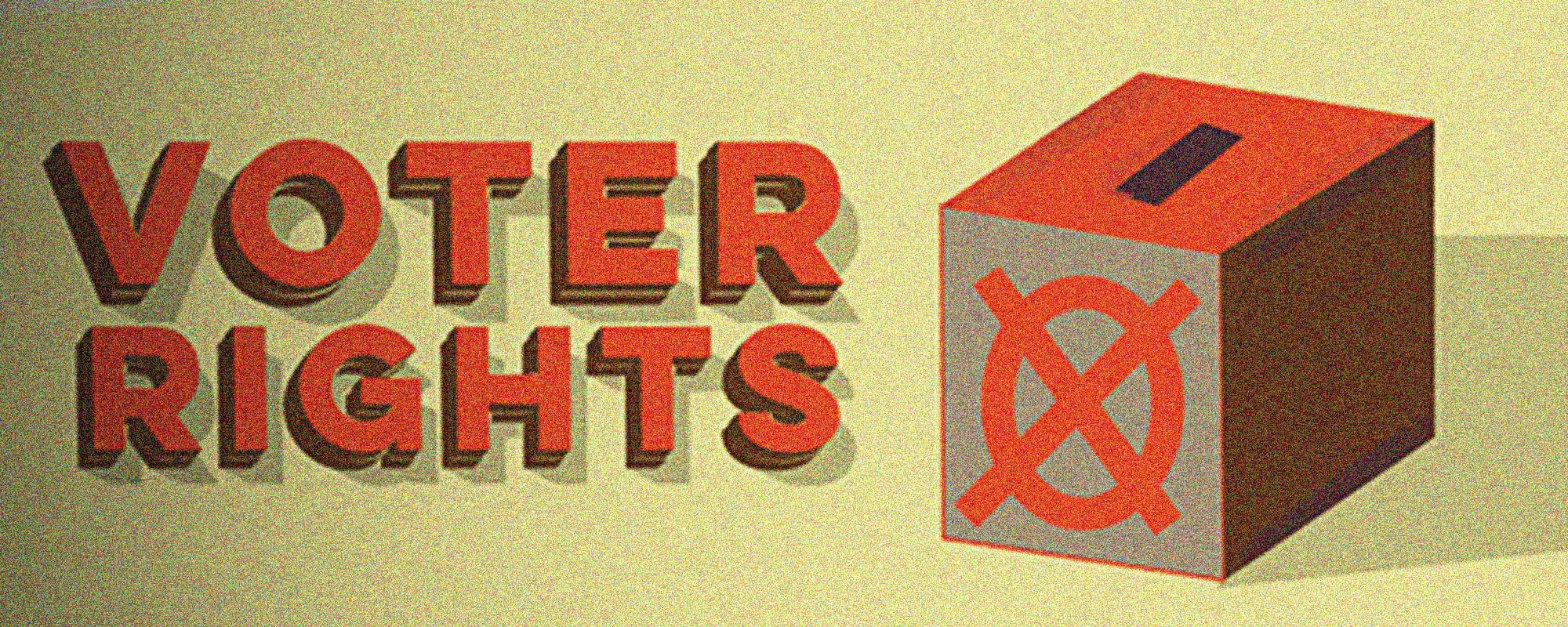Because the Learn section of TalkRights features content produced by CCLA volunteers and interviews with experts in their own words, opinions expressed here do not necessarily represent the CCLA’s own policies or positions. For official publications, key reports, position papers, legal documentation, and up-to-date news about the CCLA’s work check out the In Focus section of our website.
As Canadians, the importance of our democratic right to vote is upheld under section 3 of the Canadian Charter of Rights and Freedoms.
Democratic rights of citizens
Every citizen of Canada has the right to vote in an election of members of the House of Commons or of a legislative assembly and to be qualified for membership therein.
Those of us who chose to exercise this right during our Federal elections show up to voting stations in the hopes of influencing the outcome of the election. As citizens in a democracy, we understand that elections are a matter of counting the votes, and the person with the most votes wins. However, many people do not understand what type of electoral system they are participating in. Canada has a “First-Past-the-Post” (FPTP) voting system, which is common amongst common-wealth countries and other parliamentary democracy systems.
How FPTP works
Canada is divided into 338 different electoral ridings (previously 308), and each electoral riding has a ‘seat’ in Parliament. The Member of Parliament (MP) elected to each seat in Parliament is meant to represent that electoral riding’s interests. During election time 338 elections are held simultaneously, and each eligible voter in their electoral riding can vote for their MP. The winning candidate only needs to receive the most votes out of any candidate, known as a simple majority or a plurality, rather than half of the votes, know as an absolute majority. The winner in that election will become the MP for that electoral riding, which is commonly referred to as assuming a ‘seat’ in Parliament. After taking their seat in Parliament, each MP has an equal vote on any legislation that comes before Parliament.
As most of us know, each MP is part of a federal political party. Government is formed by the party that achieves at least a simple majority of the seats in Parliament, commonly referred to as a ‘minority government.’ Just as in electoral ridings, this doesn’t need to be an absolute majority. For example, in the last election the Liberal Party of Canada won a majority of seats in the government with 184 seats out of 338, but in 2008 the Conservative Part of Canada won with a simple majority and assumed a minority government with 124 seats out of 308.
What are some of the positive outcomes of this system?
The FPTP works by protecting the balance between regional interests and the shared interests of people from different parts of Canada. Those who share interest in what they want the role of the Federal Government to play in a broad sense are represented by the political parties which they support. Since confederation, Canada has a history of also wanting to protect regional interests. The differences between what people from rural Newfoundland want out of the Federal Government are sometimes far removed from the interests from people in downtown Vancouver. By voting for MPs for each electoral riding we have the benefit of being able to have all regional interests represented in Parliament.
What are some of the short comings of this system?
Under the section 15 of the Charter each citizen is given equal treatment and benefit under the law, so we would assume that every vote should count and has equal influence on the outcome of the election. However, in the Canadian FPTP system some regions have more representation in Parliament than others, due to how electoral ridings are divided. Ridings with lower total voting populations have the effect of making each vote count for more. Each voter has a greater influence on the outcome of the election in that riding compared to voters who lives in a larger population riding. Under section 51A of the Constitution Act of 1867, provinces are entitled to as many MPs as they have members of the Senate. For example, PEI is guaranteed 4 members of the Senate under section 24 of the Constitution Act of 1867, so they are entitled to have at least 4 MPs. In PEI each riding has about 28,000 eligible voters, whereas ridings elsewhere may have nearly 90,000 eligible voters. Because each MP is meant to represent the interests of that riding, and each MP has equal voting power, this means that some voters in Canada have triple the per capita representation of their interests in Parliament.
Another perceivable problem is that mainstream political parties are over-represented in Parliament because alternative parties aren’t viewed as viable options. For example, for the Green Party of Canada to elect Elizabeth May as their first MP in 2011, they needed a high concentration of individuals in one riding (Saanich, British Columbia) to share similar interest in voting for their candidate. In that election they achieved 1 out of the 308 seats in Parliament, while 3.8% of the total voting population across Canada voted for Green Party candidates. This creates a disincentive to voters to vote for their most preferred party or candidate for government, and encourages strategic voting. Voters, being rational decision makers, sometimes don’t wish to ‘waste’ their vote by choosing their local candidate for their preferred party because they fear that party is unlikely to find popular support in their riding, so instead they chose to vote for a candidate from a party that is more likely to be elected.
Voting alternatives
The Liberal Government is currently investigating the viability of alternative voting systems in Canada. Understanding how our system operates is crucial as we question if and how Canada will change how we vote. However, alternatives to this electoral system like the single transferable vote system (STV) and the mixed member proportional system (MMP) have their own benefits and drawbacks. Here, some of the benefits and drawbacks of our FPTP system have been discussed, and some of the following links can be used to compare the benefits and drawbacks of the alternative systems.
Useful links
http://www.cbc.ca/news2/interactives/results-2015/
http://laws-lois.justice.gc.ca/eng/Const/page-15.html
https://www.sfu.ca/~aheard/elections/1867-present.html
http://www.samaracanada.com/samara-in-the-classroom/electoral-reform/single-transferable-vote
https://engage.gov.bc.ca/howwevote/single-transferable-vote/
About the Canadian Civil Liberties Association
The CCLA is an independent, non-profit organization with supporters from across the country. Founded in 1964, the CCLA is a national human rights organization committed to defending the rights, dignity, safety, and freedoms of all people in Canada.
For the Media
For further comments, please contact us at media@ccla.org.




